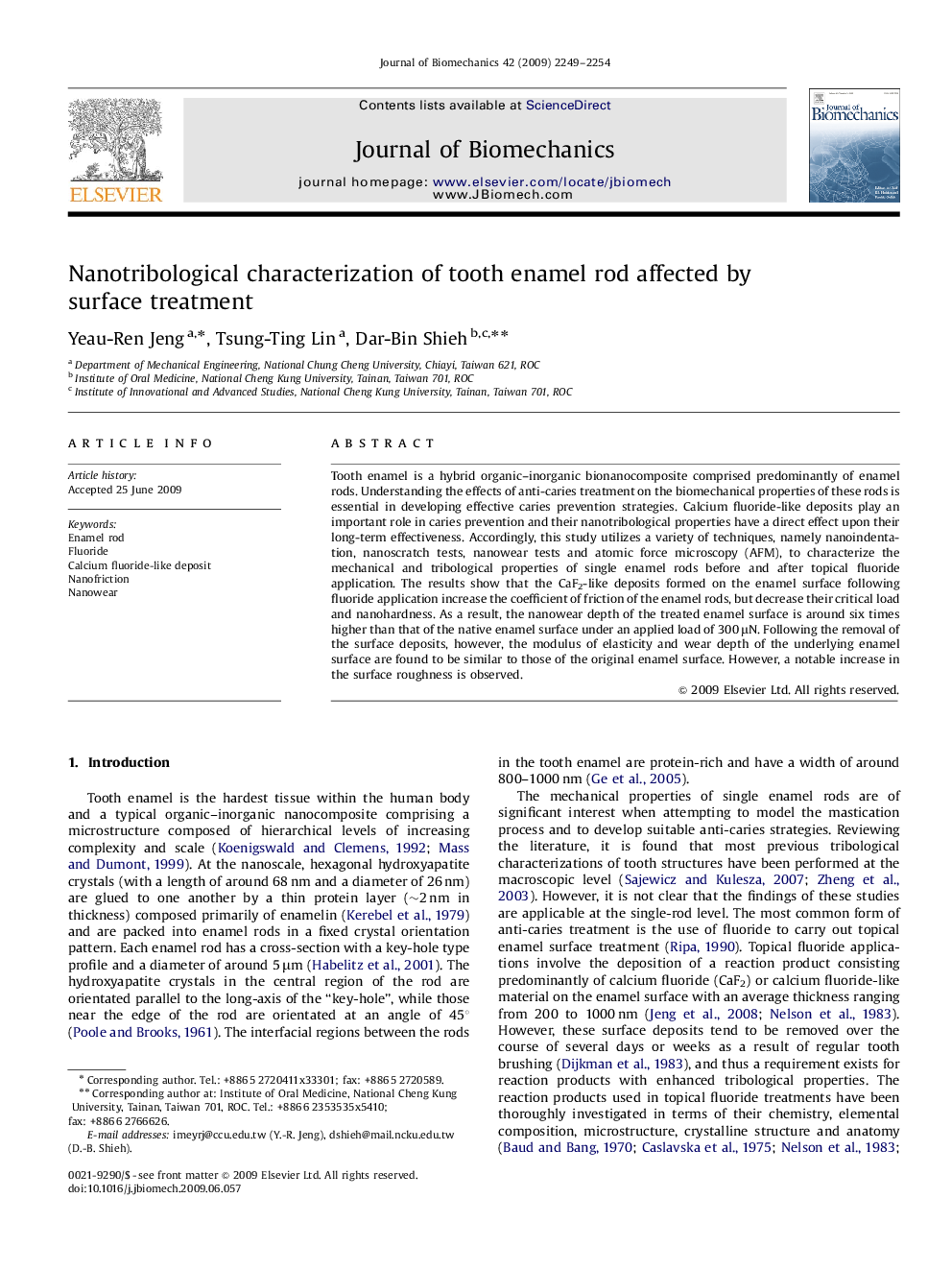| Article ID | Journal | Published Year | Pages | File Type |
|---|---|---|---|---|
| 10433512 | Journal of Biomechanics | 2009 | 6 Pages |
Abstract
Tooth enamel is a hybrid organic-inorganic bionanocomposite comprised predominantly of enamel rods. Understanding the effects of anti-caries treatment on the biomechanical properties of these rods is essential in developing effective caries prevention strategies. Calcium fluoride-like deposits play an important role in caries prevention and their nanotribological properties have a direct effect upon their long-term effectiveness. Accordingly, this study utilizes a variety of techniques, namely nanoindentation, nanoscratch tests, nanowear tests and atomic force microscopy (AFM), to characterize the mechanical and tribological properties of single enamel rods before and after topical fluoride application. The results show that the CaF2-like deposits formed on the enamel surface following fluoride application increase the coefficient of friction of the enamel rods, but decrease their critical load and nanohardness. As a result, the nanowear depth of the treated enamel surface is around six times higher than that of the native enamel surface under an applied load of 300 μN. Following the removal of the surface deposits, however, the modulus of elasticity and wear depth of the underlying enamel surface are found to be similar to those of the original enamel surface. However, a notable increase in the surface roughness is observed.
Related Topics
Physical Sciences and Engineering
Engineering
Biomedical Engineering
Authors
Yeau-Ren Jeng, Tsung-Ting Lin, Dar-Bin Shieh,
